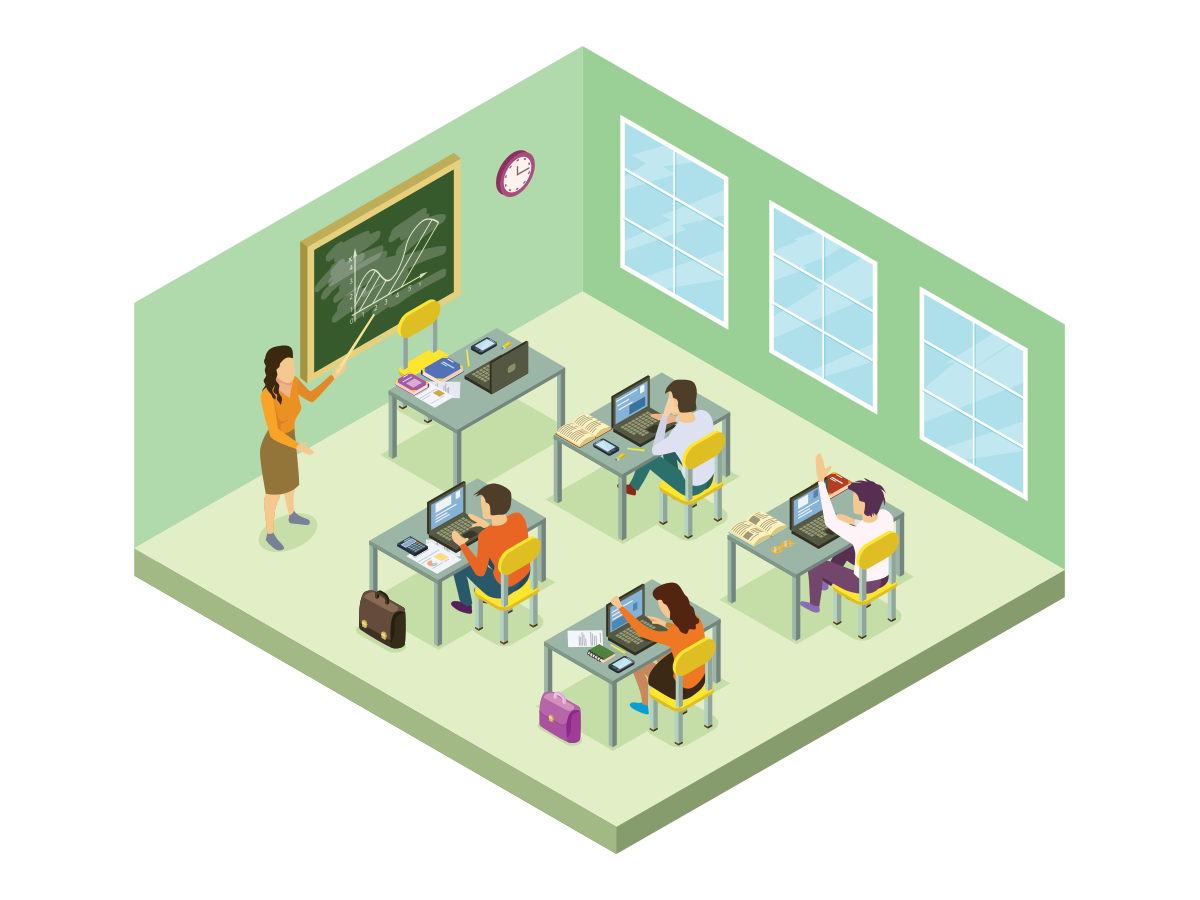This summer, Governor Gavin Newsom and First Partner Jennifer Siebel Newsom followed in the footsteps of countless parents: They moved to Marin for the schools.
The Newsoms’ move isn’t the typical education-motivated relocation. They’re keeping their Sacramento home, and at least one of their four kids reportedly attends private school. Still, the move underscores an economic truth universally acknowledged: Excellent schools are one of the pillars supporting Marin’s lofty real estate values. Parents and non-parents alike consider school quality when home shopping.
“Schools are one of the top indicators of your return on investment,” says realtor April Lepito Smith. “Even if you don’t have children or your children are no longer school age, people will always be drawn to areas with strong public school programming. It’s just a smart investment.”
Many researchers over the years have linked school quality to property values. A 2016 Realtor.com study found that nationwide, homes in highly rated school districts cost 49% more than the national median — and 77% more than schools in low-ranked districts.
When Sam and Nicole Katsin were shopping for their first Marin home, they knew they were paying for excellent schools. Sam attended public schools in Mill Valley, and wanted his kids to attend school with neighborhood kids and make lifelong friends, like he did. They eventually found the perfect spot, and look forward to sending their girls, ages 3 and 2 months, to Hidden Valley Elementary and eventually to Archie Williams High School. After all, Sam figures, they’re paying for it every time they pay property taxes on their San Anselmo home.
“One of the many reasons Marin County is expensive is the quality of schools,” he reasons.
But what really makes an excellent school? Parents, school boosters and real estate experts agree that the school quality that buyers are looking for runs deeper than online ratings.
Beyond test scores

When Rachael Cervantez and her husband Michael were shopping for a Novato home, they couldn’t forget about their son’s educational needs. With his delivery imminent, the baby was along for the ride on every home tour and investigative neighborhood stroll.
While the Cervantezes lost out in a number of bidding wars, they are now happily settled in their Novato home, from which Benito, now 2, can eventually walk or bike to Lynwood Elementary. The school features a dual immersion program.
“We definitely wanted Spanish as a second language for him, and having the immersion school was just a massive selling point for us,” Rachael explains.
With a long line of teachers in both of their families, the Cervantez family had prioritized finding the right public school district all along. But as they searched, Rachael says she learned to look beyond test scores and school rankings.
“There’s always more to the story,” Rachael says. For example, Lynwood’s test scores aren’t as high as some other Marin elementary schools. “But the reason they have lower test scores is because for the majority of their population, English is a second language.”
For Michelene Moayedi, executive director of the HeadsUp San Rafael Public Education Foundation, going beyond the published rankings meant asking around. She called the public school near her prospective home, and also talked to parents whose kids attended.
“Everyone had glowing things to say about it,” Moayedi says. Their positive feedback led her to purchase the house.
The Katsins, already familiar with Marin schools through Sam’s family and childhood friends, couldn’t take tours during the pandemic. However, simply driving by and observing helped them feel comfortable with the school in the neighborhood they eventually moved to.
“It’s a kind of quiet, tucked-away, beautiful little spot. And you can see the joy of childhood there,” he says.
The extras

Moayedi says that one thing she and other parents want to know about a public school is what the kids get besides the basics of the state required curriculum.
“Parents expect art and music. They expect extracurricular activities,” she says.
Of course, with decades of cutbacks in school funding all over California, those extras are often only possible if someone subsidizes them. That’s where school foundations like HeadsUp come in.
HeadsUp provides arts enrichment, bringing music, dance and visual arts to elementary school students. They also subsidize college readiness and wellness centers for older kids, including much-needed mental health support.
“Right before finals, we do a ‘Stress Less’ event,” where high school students can pot a succulent, make a stress ball or pet a therapy dog, Moayedi says.
Bringing equity to extras

Growing up with a teacher for a mom, Lepito learned valuable insights about how public schools improve. “She always told me that it was really the parents and the community that enacted change,” Lepito recalls.
If you believe that excellence stems from the community, then it’s no surprise to see parents and other stakeholders perpetually improving Marin schools through foundations like HeadsUp.
But there’s also an inherent challenge when relying on each school’s immediate community for funding: Not all parents are able to fundraise at the same level.
Whenever California reduces school funding, essential programs go out the window — especially “extras” like arts education. Foundations, often at the district level, do their best to fill that void. But while one foundation may be able to raise millions of dollars, others struggle to raise thousands.
That dichotomy led to the 2010 founding of SchoolsRule Marin, a coalition that raises funds for all Marin school districts to support arts, literacy, health and technology programs.
“The southernmost districts had the opportunity to bring back these programs because they live in a healthy economic situation, while other districts, not by any fault of their own, just because of the diversity of their neighborhoods, have a much harder time raising these funds,” says Trisha Garlock, executive director of SchoolsRule.
While benefiting all Marin schools, SchoolsRule plays a crucial role for Novato and San Rafael schools, which serve more low-income families than other Marin districts.
“It’s been a huge impact,” in San Rafael, Moayedi says. For instance, HeadsUp was originally only able to bring music classes to fourth and fifth graders. But due to increases in funding from SchoolsRule and HeadsUp’s own fundraising growth, they were able to add another grade level every year. By 2020, San Rafael students in K–5 were all enjoying music education at school.
At first, SchoolsRule distributed funds to all Marin districts on a per-student basis. But in 2022, they added the Equity Fund, allowing them to target a portion of their dollars to the districts that needed the most help.
To Garlock, who before SchoolsRule founded the Mill Valley schools foundation Kiddo!, SchoolsRule and the Equity Fund in particular are a pathway to the way things should be for all students.
“There shouldn’t be high- and low-quality districts. They should all be high-quality districts,” she says.
The schools–real estate connection
SchoolsRule raises money from all kinds of businesses, all of which are invested in maintaining great public schools in Marin. However, the organization has a unique relationship with the industry that stands to gain the most from school quality: real estate.
The SchoolsRule Realtor Promotion Program solicits donations from real estate agents in exchange for joint promotions (including ads in Marin Magazine). For realtors who are consistently telling buyers about Marin’s great schools, it’s a chance to put their money where their mouth is.
Lepito, a mom of two elementary students and a San Rafael PTO member herself, is an enthusiastic participant. “(As Realtors) we get asked for a lot of sponsorships. This one was the biggest no-brainer,” she says. Not only does supporting all Marin school districts appeal to her on a personal level, Lepito sees it as a smart business move. “SchoolsRule is helping rising tides carry all boats, so everybody can benefit from the affluence and generosity of the community by having the highest level of public school education that they can. It’s a win for the community and society at large — but also for homeowners. Having really strong public schools will help maintain their property values.”


